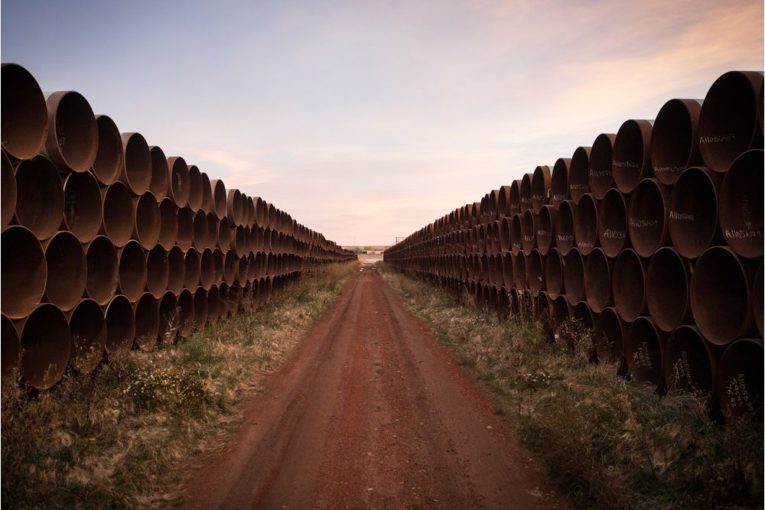
Stop me if you’ve heard this before.
A judge puts the brakes on a vitally important piece of energy infrastructure for the oilpatch, Alberta and Canada.
It will cause further project delays and continue the pipeline constraints now squeezing the oxygen out of Canadian oil prices.
All this, despite the initiative having won political backing and a string of other rulings in its favour.
But that doesn’t matter.
On Thursday night, a U.S. judge put the brakes on TransCanada’s $10-billion Keystone XL project, mirroring a Canadian court ruling in August that shoved the Trans Mountain expansion into legal limbo.
Calgary-based TransCanada said Friday it remains committed to building the project, but it appears the decision will add many months to the project’s timelines, at best.
I’m sure it’s just coincidence, but it sure seems the Keystone XL and Trans Mountain expansion projects are handcuffed together, both trying to scramble out of thick legal and regulatory quicksand.
“This is like another blow on a bruise and it hurts, and it has already been hurting,” said retired TransCanada executive Dennis McConaghy, who wrote a book about the trials and tribulations of the Keystone XL project.
“It has many of the characteristics of the Trans Mountain ruling, in terms of a judge second-guessing other rulings, and (the project) having a massive timeout.”
Earlier this spring, I compared the race to build Trans Mountain and Keystone XL to a slow-motion contest between two turtles.
Today, it seems like both turtles have been flipped on to their backs, legs flailing, waiting for an act of providence to roll them over.
Like the reaction toward Trans Mountain’s troubles, a collective groan emerged from downtown Calgary after U.S. District Court Judge Brian Morris in Montana granted an injunction stopping construction of Keystone XL.
Work was expected to begin in 2019, although TransCanada had yet to announce a final investment decision.
The 1,900-kilometre pipeline would move 830,000 barrels of oil from Hardisty to Steele City, Neb., where it would ultimately be shipped to U.S. Gulf Coast refiners.
After a legal challenge from a coalition of environmental and Indigenous organizations, Morris, who ruled against the project earlier this year in a related case, determined Keystone’s approval by the Trump administration last year failed to adequately address several concerns.
The judge said the U.S. State Department needs to do a supplemental environmental impact assessment to consider the ramifications of current crude prices on the project’s viability, the cumulative effect of greenhouse gas emissions from the pipeline and the Alberta Clipper expansion, and updated modelling about potential oil spills.
“It’s a frustrating setback,” said Alberta Energy Minister Marg McCuaig-Boyd, whose government has committed to ship 50,000 barrels a day on Keystone XL.
“We are giving our resources away cheap.”
For the industry, the timing couldn’t be worse.
Due to a lack of pipeline capacity, Canada heavy oil is selling at a steep discount to American crude, at more than US$42 a barrel.
It also comes as benchmark U.S. oil prices closed Friday below US$60 a barrel.
The Canadian oilpatch reacted with frustration and fury to the setback, saying it underscores the need for Ottawa to create a practical, manageable system for approving new pipeline projects north of the 49th parallel.
“It’s a complete disappointment and it’s untenable,” Surge Energy CEO Paul Colborne said of the Keystone decision.
“You get a ruling like this take the wind right out of your sails. The market has absolutely been hammered the last two days for oil companies in Canada. It’s a sense of frustration and helplessness.”
For Colborne and others across the industry, the U.S. court decision also illustrates why the Trudeau government needs to reconsider Bill C-69, new legislation before that Senate that will overhaul approval of major energy projects.
The Canadian Energy Pipeline Association contends the new Impact Assessment Act will likely prevent any major oil pipelines from being built in the future.
“To use hockey analogies, we are kind of back on our heels in our zone playing defence and the opposition, they’re in our end all the time. We’ve got to start doing some offence,” said Chris Bloomer, CEO of the Canadian Energy Pipeline Association.
Tim McMillan, head of the Canadian Association of Petroleum Producers, believes the country needs to revive the failed Energy East and Northern Gateway pipeline developments.
TransCanada pulled the pin on Energy East a year ago after it ran into ongoing regulatory headwinds, while the federal government’s oil tanker moratorium off the northern B.C. coast killed Northern Gateway.
“A court ruling in the U.S. will have a dramatic affect on the Canadian economy, but it wouldn’t if we had meaningful access to our own coasts,” McMillan said.
These forces are all raging while petroleum producers across Calgary are now busy preparing their 2019 spending plans.
Whitecap Resources CEO Grant Fagerheim said his company previously considered a $600 million capital program for next year. With the steep oil-price discounts, it will chop at least $100 million from that amount.
“If you look at the $100 million, look how many jobs that creates within our provinces and within our country,” he said.
As oil-by-rail shipments increase this winter, price differentials are expected to narrow in the coming months. Enbridge’s Line 3 replacement project should be finished later next year, although it isn’t large enough to handle all of the new crude slated to be brought on in the coming years.
And that means either Trans Mountain or Keystone XL — and likely both — are needed if future investment and more jobs are to flow from the oilpatch.
Today, both developments have a cloud of uncertainty looming overhead.
Different projects, but it’s the same old story when it comes to building oil pipelines out of Alberta.
Chris Varcoe is a Calgary Herald columnist.
You can read more of the news on source
